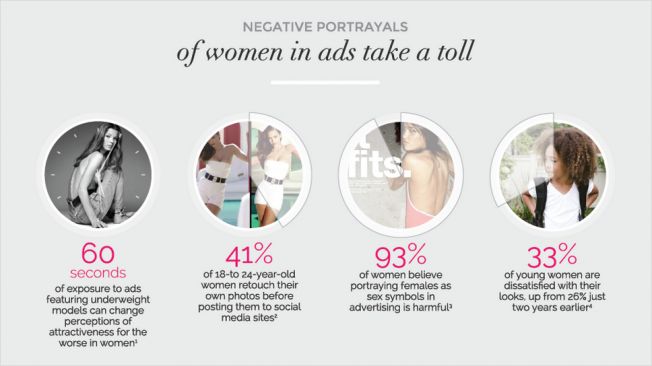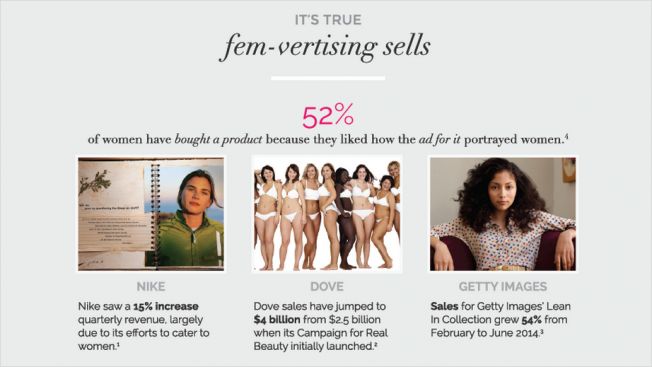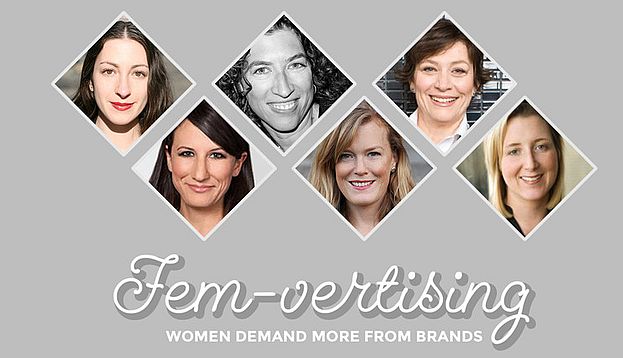Women in advertising is nothing new, but the way they’re being used has improved quite a bit, even if some feel that the message can be a bit polarizing at times. They can also lead to certain negativity from those on the Internet, particularly “trolls” that have nothing better to do than pick on said advertisements.
Regardless, they’re doing more than you might believe. An Advertising Week panel of industry leaders have revealed that marketing campaigns that utilize empowerment in females, old and young alike, are becoming a big hit with consumers, thus leading to a huge turn-around in sales.

The study, titled Fem-vertising: Women Demand More From Brands, the session called the movement “advertising that employs pro-female talent, messages and imagery to empower women and girls.”
As you can see from the notes in the graph above, negativity can take quite a toll in advertising. 60 seconds of exposure to ads featuring underweight models manage to change perceptions of attractiveness for the worse in women. In addition, 41 percent of 18-24 year old women actually retouch their own photos before posting them to social media. 93 percent of women believe that portraying females as sex symbols actually leaves a harmful affect with advertising. Finally, 33 percent of young women feel dissatisfied with their looks in general, which is a rise from 26 percent two years before.

However, “fem-vertising,” as it’s called, actually has a greater effect when it sticks more to truthfulness. According to the graph below, 52 percent of women have purchased products mainly based on how women are portrayed in the product’s advertising. Some examples of this include Nike, with an 18 percent increase in quarterly revenue from focused advertising, and soap maker Dove, with a $4 billion jump in sales following the debut of a Campaign for Real Beauty campaign, which features more real types of women and less supermodel types.
“There’s a real relief in seeing yourself reflected,” Lauren Greenfield, director of Always’ Like a Girl campaign and a member on the panel, said, feeling that women that can relate to something in an advertisement has a big effect.
“There’s a pay gap, a leadership gap and visual gender gap,” added Jessica Bennett, another member of the panel and a partner in Sheryl Sandberg’s Lean In Collection for Getty Images. “You can’t be what you can’t see.”
“Many, many brands make their livelihood selling on the insecurity of women and girls, and that’s not going away,” said Greenfield, who also wrote the book Girl Culture. However, this “fem-vertising” could go a long way into introducing a new angle in advertising.
What do you think? Do you prefer a more realistic approach to female-oriented advertising?
Source: Adweek

